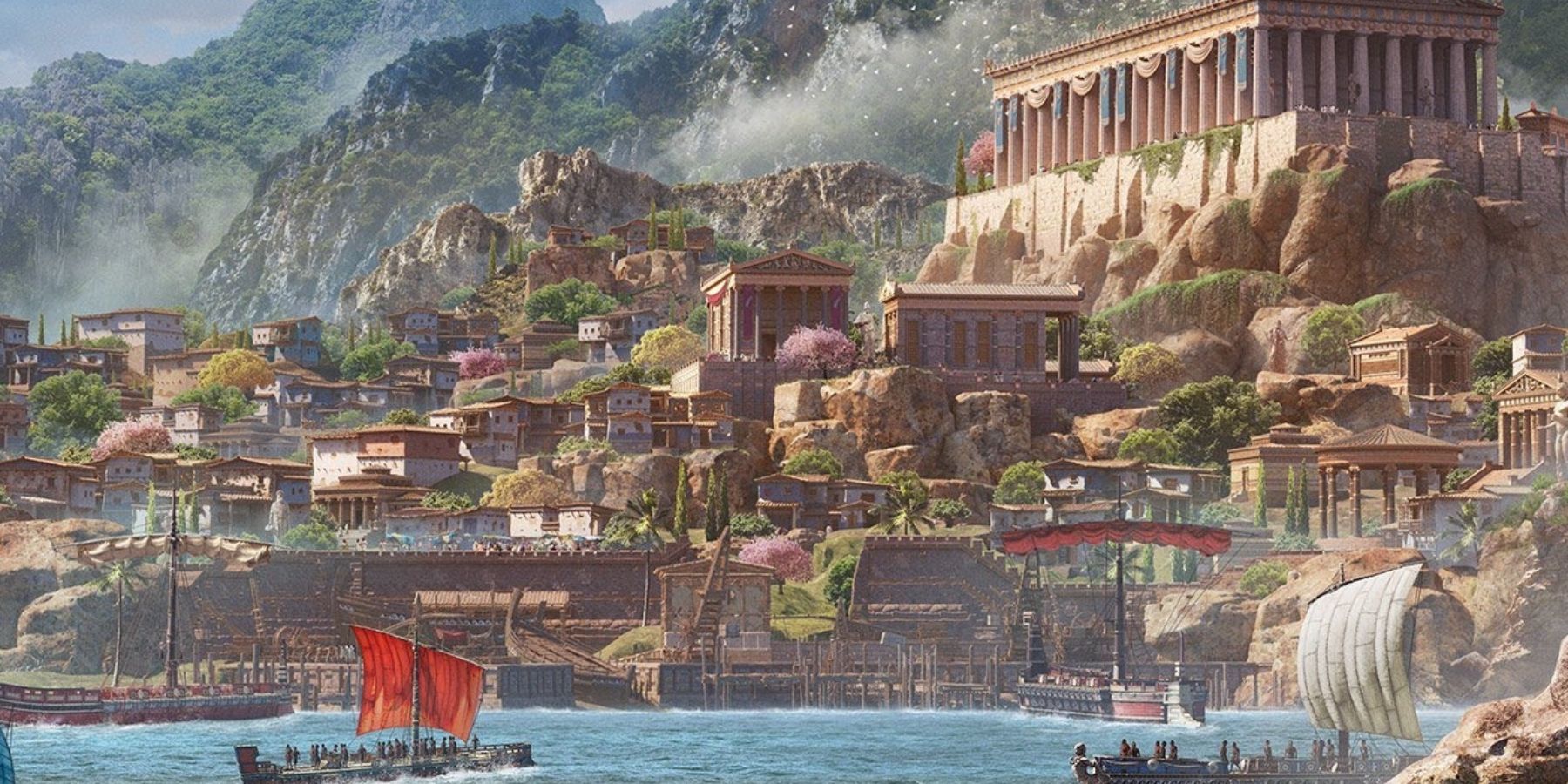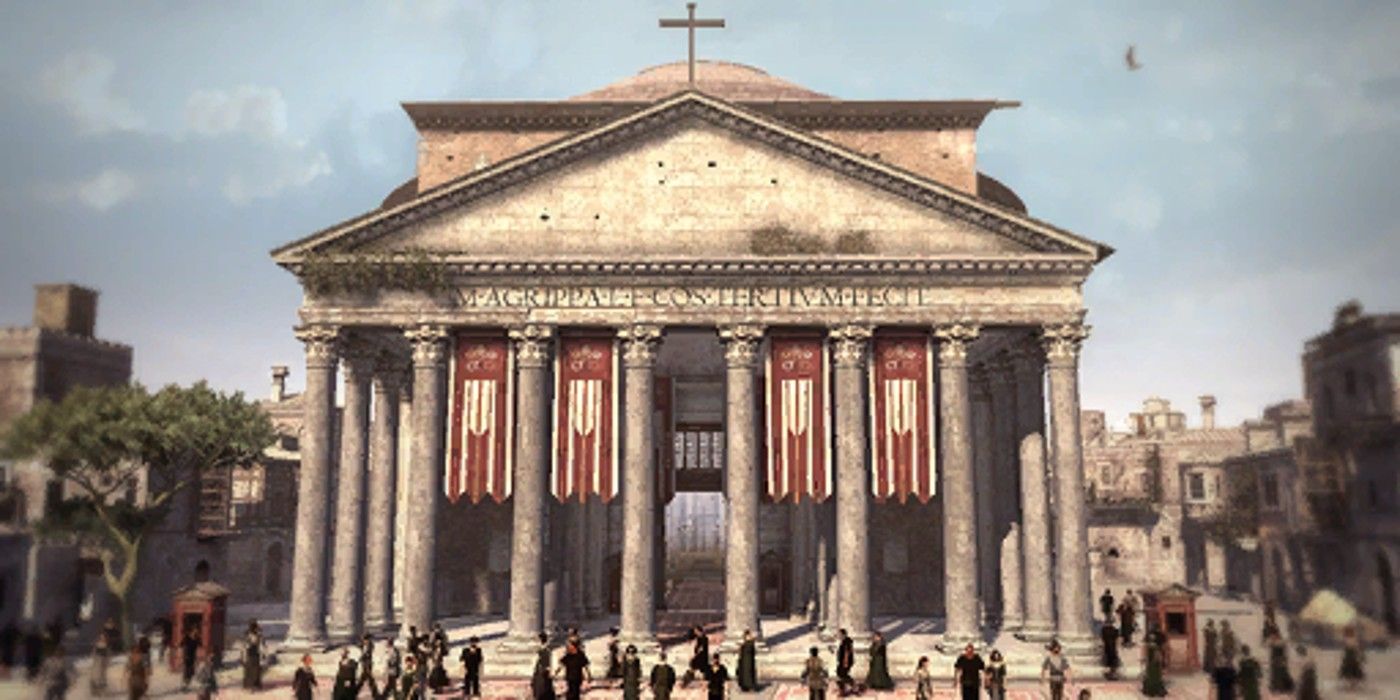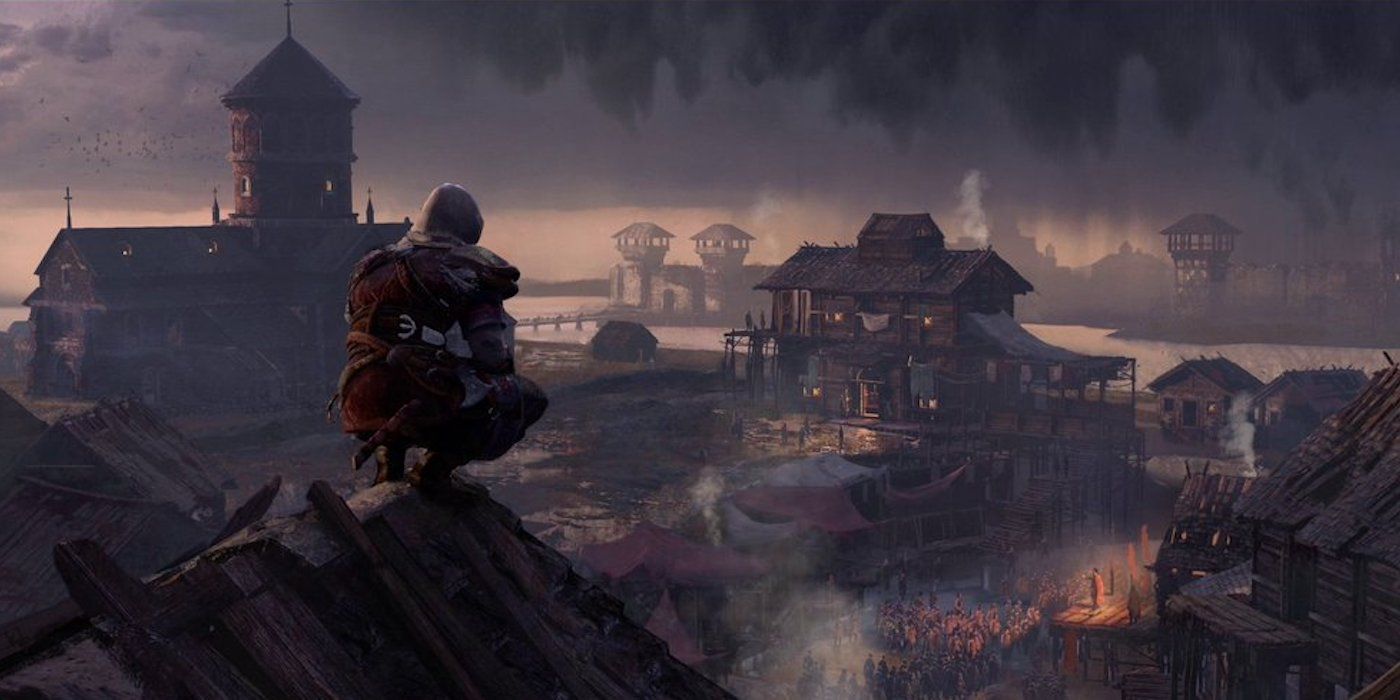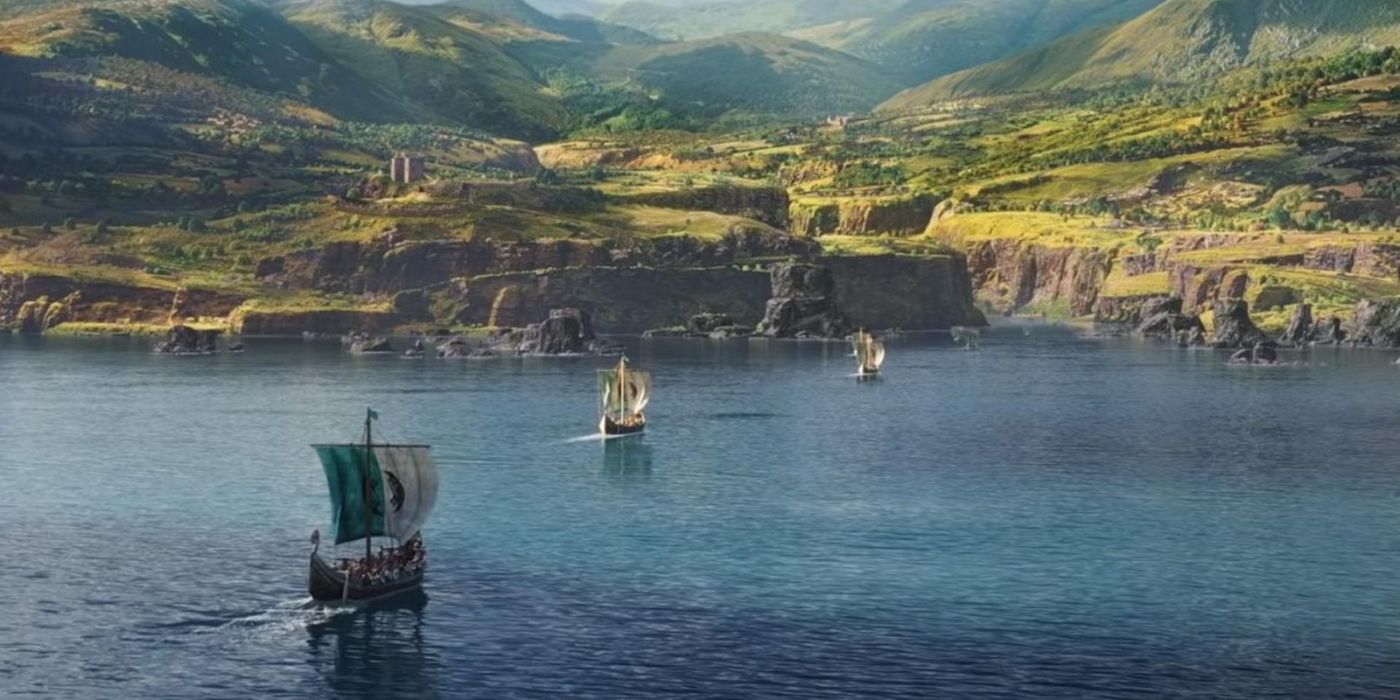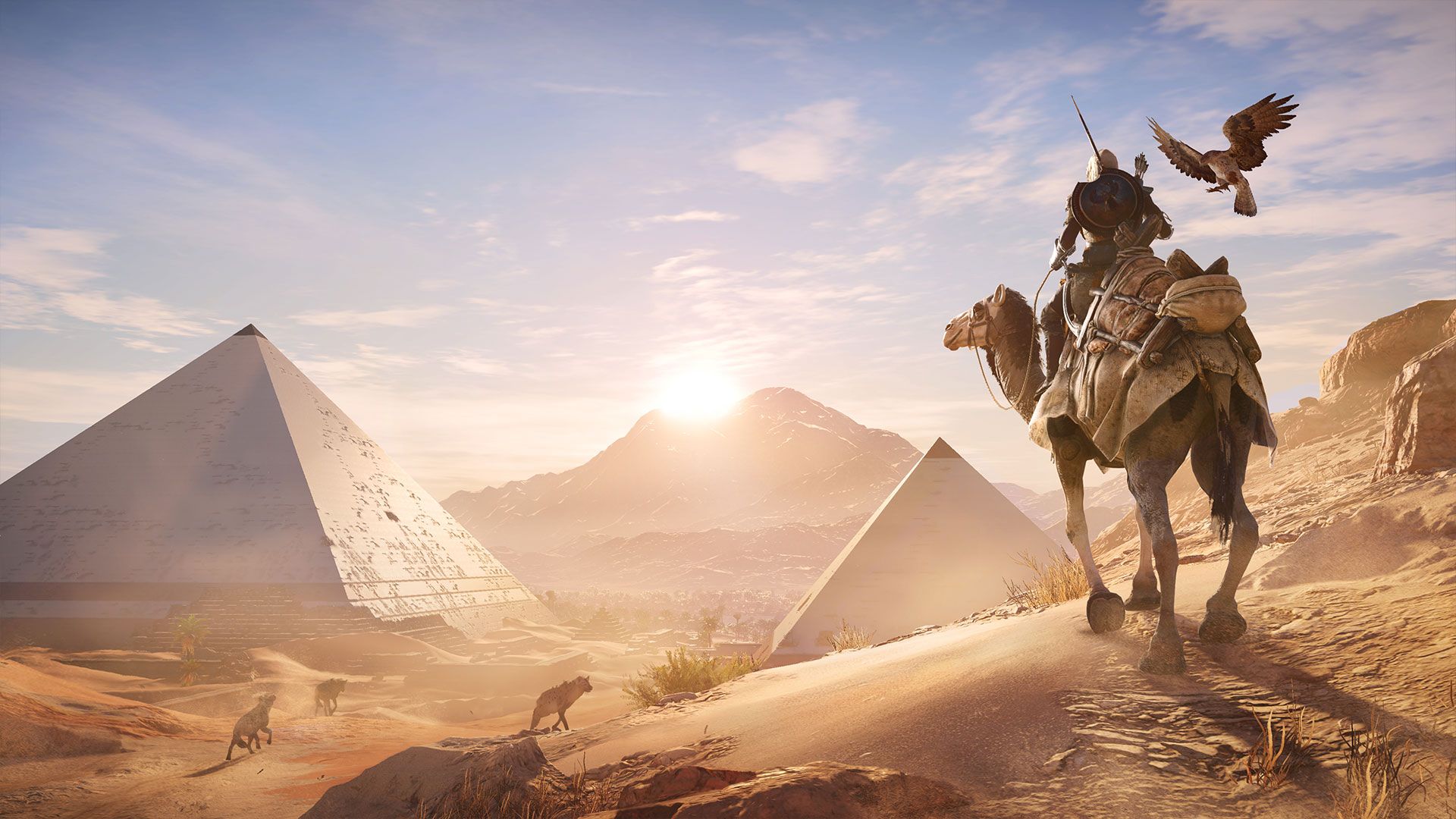Over the collection of Assassin's Creed video games, developer Ubisoft has painstakingly reconstructed immense historical monuments in order to suitably immerse players in the past settings of the games. The Assassin's Creed series has explored various historical periods, from Classical Greece to Victorian London. The games serve as a fictional history of real world events, incorporating historical and mythological figures and stories into the campaigns, which necessitates the reconstruction of famous historical landmarks to provide playthroughs that are suitably accurate and entertaining.
The Assassin's Creed series consists of 12 main games that are action-adventure RPGs with a focus upon combat, stealth, and parkour abilities to eliminate targets and explore the environment. They consist of a framing story set in the 21st century in which players take on the role of a present-day character who relives genetic memories through machinery, called the Animus, allowing players to also play as an assassin ancestor in a past world. Players can explore the vast ancient open worlds and complete tasks to follow the story, as well as numerous side quests and bounty missions.
Assassin's Creed 2 introduces protagonist Ezio Auditore de Firenze, whose hooded figure is a recognizable staple of the AC franchise. The following installment, AC Brotherhood, takes Assassin's Creed to Rome, Italy in the year 1500. Rome has been an important European city since its mythological foundation in 753BC. Ubisoft has recreated the streets of the Italian capital as it was in the early 16th century, and most impressive amongst this is the Pantheon.
Assassin's Creed Pantheon In Rome Is Impressive
Today, the structure is a well-known tourist site, and Assasin's Creed's Pantheon is a splendid recreation of the impressive radial building. It consists of a façade of Corinthian columns supporting a gabled roof and triangular pediment, behind which an incredible radial dome stands. The Pantheon was originally a temple to the gods commissioned by statesman Marcus Vipsanius Agrippa in 27BE and was rebuilt by Emperor Hadrian by 128AD, and later was sanctified as a church in the 7th century. Sketches survive of the Pantheon in its late antiquity, such as by architect, Giovanni Fontana, which depicts the building's colonnaded façade and spherical dome in the late 16th century. Ubisoft's reconstruction seems to be relatively accurate, with liberties only taken to make the building fit for climbing mechanics and to detail the richly decorated dome interior.
Assassin's Creed Versions of Paris & Greece Are (Mostly) Historically Accurate
The eighth game in the series, AC Unity, is set during the French Revolution, specifically from 1789 to 1794. Ubisoft recreates the streets of 18th century Paris for protagonist Arno Dorian to explore. One of the most important reconstructions in this Parisian model is the Gothic cathedral of Notre-Dame. Located on the Île de la Cité (an island in the Seine river) and largely constructed by 1260, this structure was built as a church dedicated to the Virgin Mary.
Notre-Dame de Paris was largely desecrated during the French Revolution, though it has survived (until recently) as an icon of the Parisian skyline. When the cathedral caught fire in 2019, many thought Ubisoft could lend their 3D rendering of the structure to aid reconstruction as Senior Level Artist, Caroline Miousse, had spent over two years reconstructing the structure from blueprints. However, changes were implemented to make the building better for aspects of gameplay, like combat and stealth, such as opening windows and an easily traversable tribune. While these added features are minimal, omitted features are pretty detrimental and inaccurate; for instance, the cathedral did not acquire its iconic spire until 70 years after the time of the game, but it was included to help immerse the players.
AC Odyssey takes the series to Classical Greece, in which players explore the Aegean as a female or male mercenary, Kassandra or Alexios. This game takes place during the early Peloponnesian War between Athens and Sparta, between 431 to 422BC. Like Rome, Greece has a rich classical history that Ubisoft recreates here. Not to be confused with the Pantheon, the Parthenon was a colonnaded temple set atop the Athenian acropolis, dedicated to the city's patron goddess, Athena. Originally constructed between 447 to 432BC, the Parthenon was sanctified as a Christian church to the Virgin Mary in the 6th century and later became a mosque following the Ottoman conquest of the 1460s.
AC Odyssey does a fantastic job of bringing the acropolis to life. This area of the game has been hailed as a "living exhibit," as in Discovery Mode players can freely explore the reconstructed acropolis. Accurate and interesting aspects include the strong foundation walls beneath the acropolis, evidence for the area's earliest inhabited time as a fortification due to its naturally elevated defensive position. The game also brings to life a different experience of the classical world with colorful banners and offerings, people walking about and praying, and the colossal bronze statue of Athena Promachos; it is worth remembering that classical buildings and statues were not all plain white.
How Accurate Is Assassin Creed Valhalla's Historial England
The most recent installment, AC Valhalla, takes place during the Viking expansion into the British Isles, principally set between 872 to 878AD. Players control Viking raider Eivor Varinsdottir, beginning the game in Scandinavia before expanding to England and further afield. In this open world, Eivor can stumble across Stonehenge; a prehistoric monument consisting of standing monolith stones and a surrounding circular ditch constructed around 5000 years ago, set within the ritual landscape of the Salisbury Plains, southern England.
In AC Valhalla, the site has a standing stone puzzle during which players must align luminescent engravings that appear on the rock surfaces. This quest perhaps references many prehistoric European monuments (including Stonehenge itself) that align perfectly with the direction of the sun on summer and winter solstices. Stonehenge is already millennia old by the time Eivor is exploring the Wiltshire countryside, and the game site looks pretty similar to what survives today (aside from the missing visitor center, gift shop, and car park).
AC Origins Shows Historical Landmarks In Egypt
In Assassin's Creed Origins, ancient Egypt is completely reconstructed, including the ancient capital of Memphis, populated delta cities like Alexandria, oases in Faiyum, and not to mention vast, rolling deserts. The game is set in Ptolemaic Egypt at roughly 51BC, and follows protagonist Bayek of Siwa as he deals with events immediately following the deposition of Cleopatra. Of course, Ubisoft had to create the obvious landmarks: the Pyramids of Giza. These colossal structures served as tombs for the ruling Pharaohs of the Egyptian Old Kingdom and were already over 2500 years old by the time Bayek could climb and raid them.
AC Origins' recreations of the pryamids involve the original polished white limestone cladding and golden pyramidion tip. These features would have made the structures highly reflective of the strong African sun, and were probably quite hard to directly look at. Today's pyramids have completely lost these features due to collapse and removal, and Assassin's Creed Origin's pyramids show signs of its deterioration. Origins goes further to provide many other pyramids for players to explore, including predecessors to the Great Pyramid at Giza, including Djoser's Step Pyramid at Saqqara, and Sneferu's Bent and Red Pyramids at Dahshur. This entirety is a testament to the feat achieved by Ubisoft with the scale and historical precision of these landmarks.
While no in-game reconstruction can be an entirely perfect replica of the site in antiquity, Ubisoft does a fantastic job of creating impressive structures that convey the magnificence of these places. Inevitable deviations occur when adapting structures to be more useful for a game, and liberties are taken to re-imagine the ruins in their former splendor. It perhaps would be interesting for future Assassin's Creed games to reconstruct more of the ancient Seven Wonders, bringing this ruined or lost locations into life.

